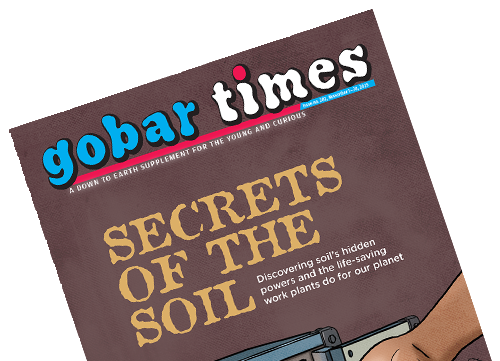
To burst or not to burst?’ is a question many young humans might be asking as the patakha (firecracker) season begins. Teachers and doctors tend to advice against firecrackers but there’s always a paan-chewing uncle or a macho friend who’ll bully you kids into becoming enthusiastic arsonists. It’s usually a tough choice to make. Some additional information is always a good help in firming up ones’ resolutions. Therefore, let's throw some light on the history, chemistry, and eco-friendliness of patakhas.

Honeybees are an integral part of mountain farming in Himachal Pradesh. They are a source of income, nutrition, and medicine for mountain communities. These tiny superorganisms help in the pollination of plants, which increases the productivity of crops and maintains the biodiversity of the region.Traditionally, farmers in Himachal Pradesh keep the indigenous honeybee called...

The fruit’s flour is nutritious and easy to use. Babbi stared hard at the bunch of green bananas that her dad was carrying. The thick stalk had some 50 bananas. “What will we do with these?” she pondered. But her parents were very excited. “We are going to turn this into flour,” mother informed and told Babbi to go wash her hands and come help. By the time she returned, everyone in the kitchen was busy…

Navdeep Salam, a teacher at the Government Primary School, Nathukonha village, Dhamtari district, Chhattisgarh, redefines the grim ground reality by creating a room-to-read where none existed. The road leading towards Nathukonha, the only one connecting it with the rest of the world, is undoubtedly its most recent and significant development. Nathukonha is a small, remote village of the Gond tribe.
.png)
A standing ovation to those who actually do something about the problems they see around them—a story of a simple teacher who rescues kids without a future. Namaste friends! My name is Amit Rajbhar. I stay in Chaknapur (Kosda) village, which lies in the Araji Line Block of Varanasi. Since the past 15 years, I have been working as a school teacher in the Asha Samajik Vidyalaya. It is run by an ngo called 'Asha for Education'...

1,697 people killed in India after being struck by lightning between March 2020 and April 2021. Lightning strikes kill more people than cyclones, earthquakes and floods every year. As the Earth heats up, the number of extreme weather events like heat waves and thunderstorms are also increasing. Warming adds to moisture levels in the atmosphere not just in coastal areas but also the Arctic and Antarctic regions.

In the rural village of Kanwarpura, Rajasthan, this doctor turned solar entrepreneur is using the KUSUM Yojana to boost his income by 200 times while providing clean energy to the farming community. The village of Kanmarpura was struggling with a water crisis when Amit Singh decided to seek out a modern solution for his deteriorating farmland and hence became the first person in India to generate income by selling clean energy to DISCOM using the PM- KUSUM Yojana.

